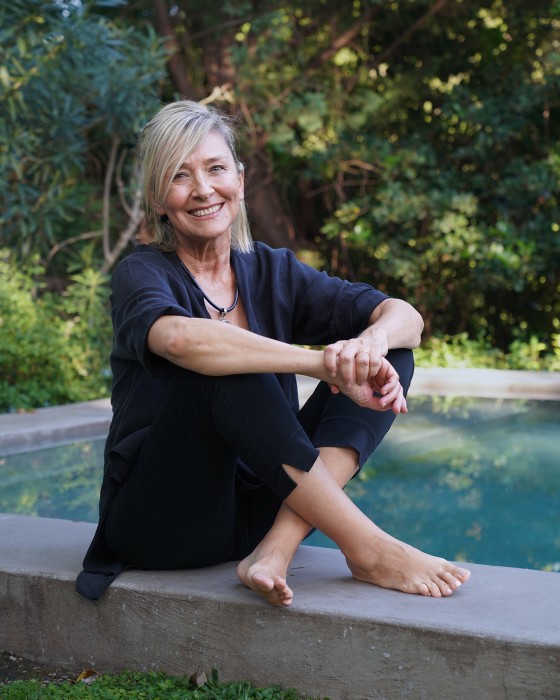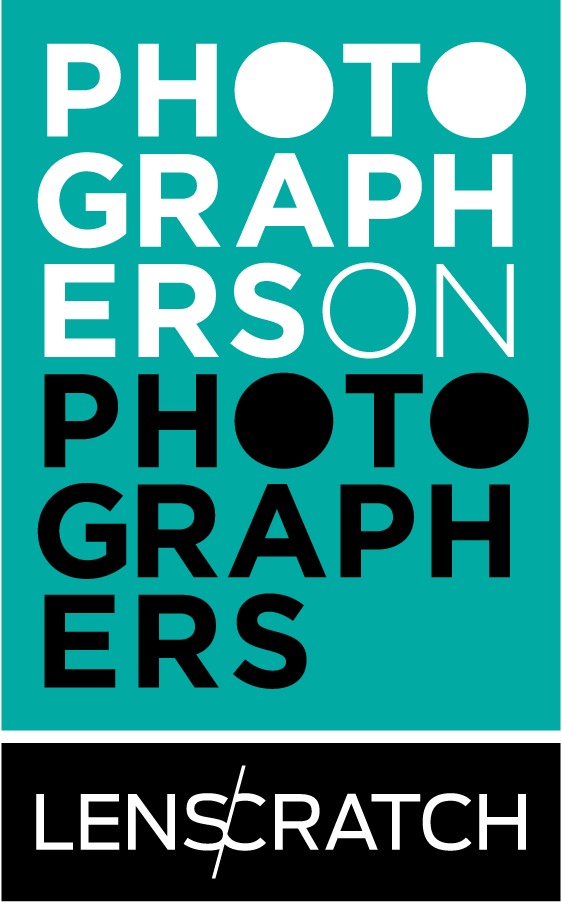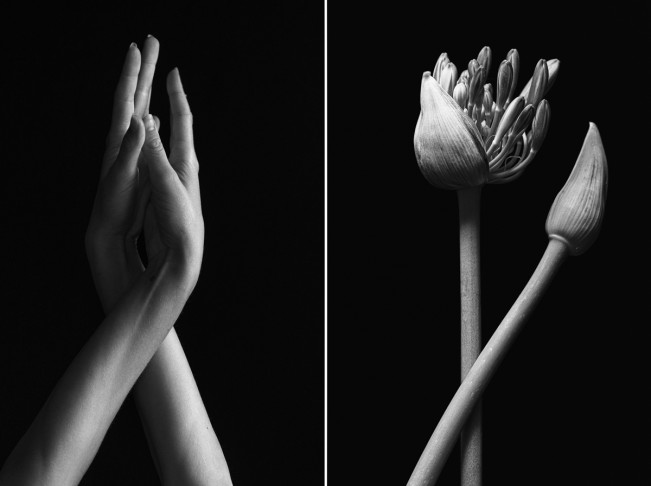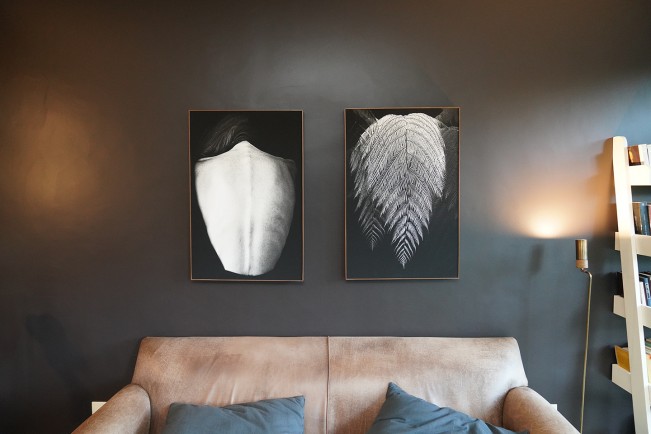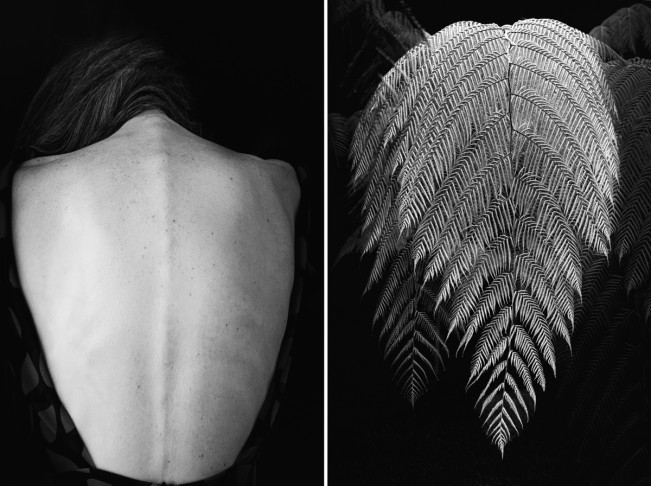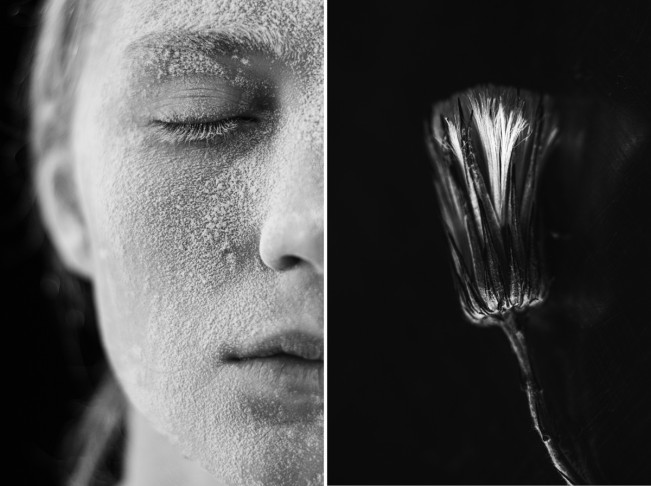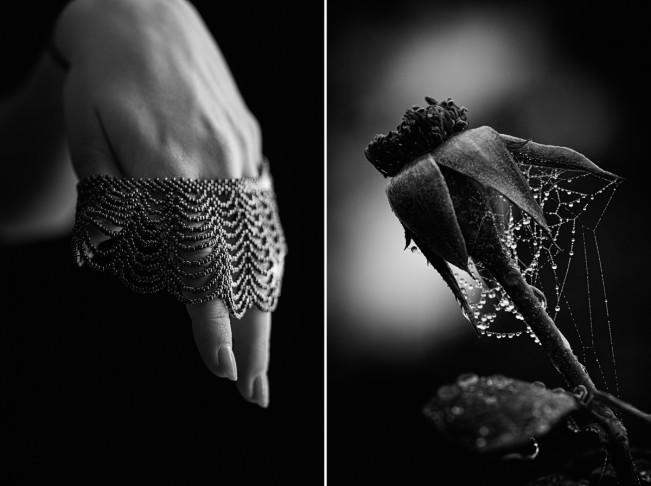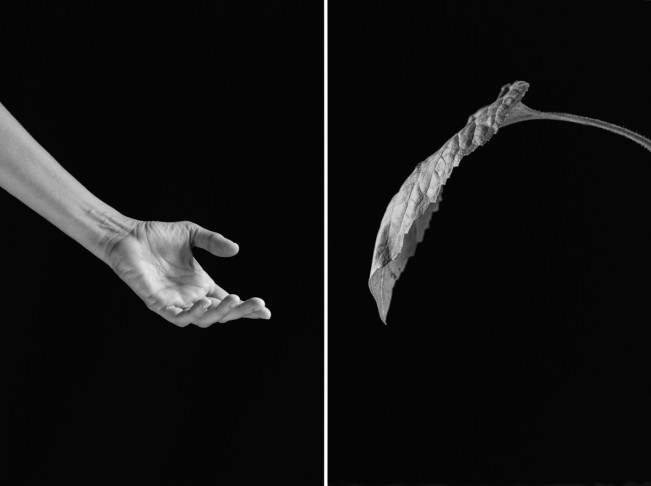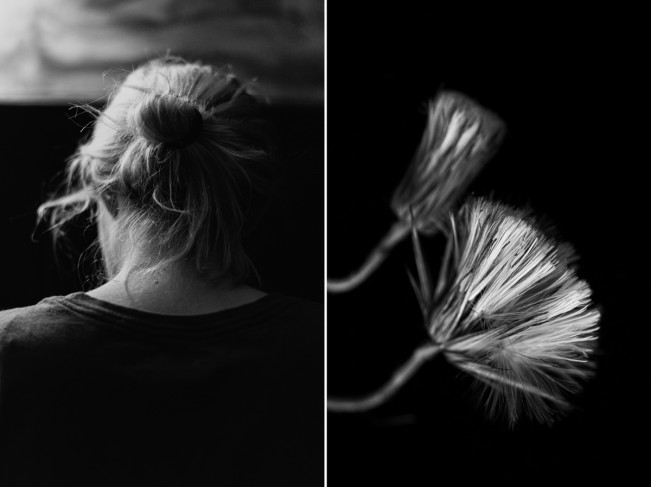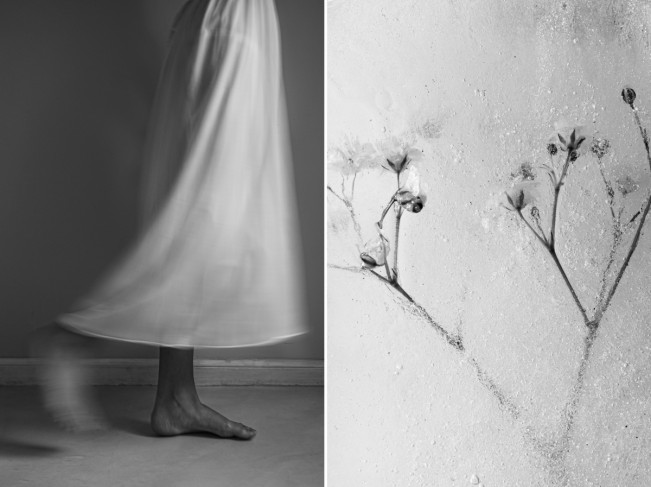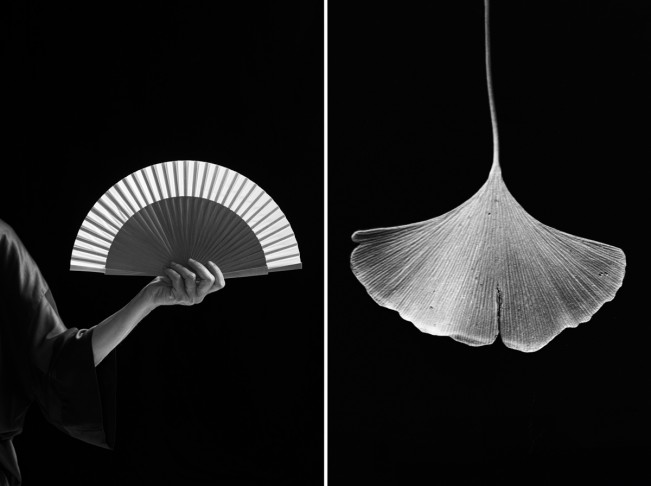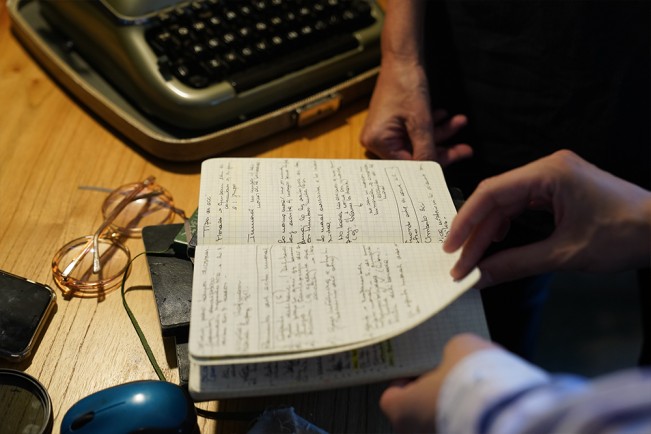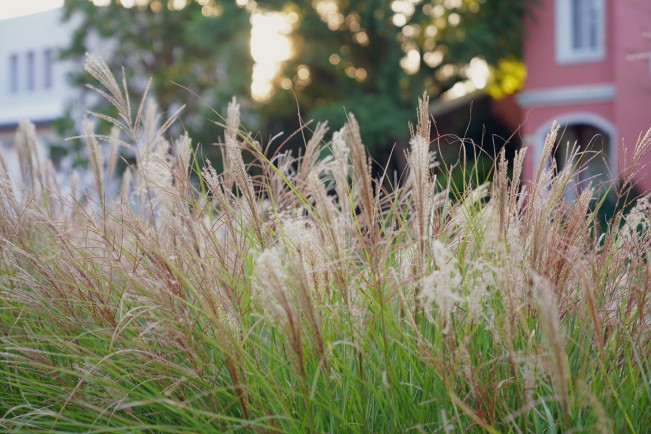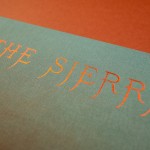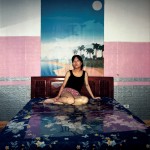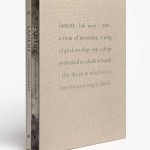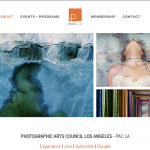Photographers on Photographers: Vicente Isaías in conversation with Paula Aranoa
Photographers on Photographers is our annual August effort where we ask photographers (including the Top 25 Winners of the 2023 Student Prize Awards) to interview an artist or mentor that has impacted or inspired their practice. This article features a conversation between Paula Aranoa and Latin American editor Vicente Isaías.
Paula Aranoa and I met during a trip I made to Buenos Aires in March 2024. I had the pleasure of visiting at her home studio in Pilar, about one hour north from the capital, where we talked about her life as an artist. During my visit, I was charmed by Paula’s lively personality, fascinating anecdotes, and her ability and disposition to find beauty and elegance in the ephemeral and vulnerable moments of the everyday. Paula wondrously captures these instants in emotive and metaphorical diptychs in her project Entretejidas. The images are mesmerizing, inviting us to slow the gaze down and appreciate the subtle textures of skin and elegant folds of flowers. We chatted over coffee and walked around her garden, where I was able to feel her strong connection and contagious admiration for nature, writing, philosophy, and photography.
While our practices are drastically different aesthetically, her work has inspired me to look at photography from a different angle, challenge my reasons for photographing, and slow down the rhythm through which I approach art and image-making. I am thrilled to share this conversation at Lenscratch today.
Editor’s note: This interview has been condensed for brevity and translated from its original in Spanish.
Paula Aranoa (Buenos Aires, 1966). She has also lived in cities like São Paulo, Mexico City, and Barcelona. She discovered her passion for photography after exploring studies in philosophy, fashion design, and landscaping. Everything she received back then continues to pulse in her works. Currently, she resides and develops her projects in Buenos Aires. She has actively participated in fairs and exhibitions, both nationally and internationally. Her photos have been exhibited by the UN on three occasions. Her work has been published in books and magazines such as Photographize, Bnw Minimalism, and Caption Magazine. She has also collaborated with Sony Alpha Latin seminars. Among her awards stand out: first place in the Women by Women category of Life Framer (2022), first prize in Portraits BW by Lucie Foundation (2023), first prize in the Women by Women category of the Julia Cameron Awards (2023), and Agora Awards (2023), respectively. Her series “My Dialogues with Mystery” has obtained the second place in the Minimalism Photography Awards (2023) and in the Julia Cameron Awards (2023).
Entretejidas
I see traits of my own femininity in nature. Connections that weave us together. A preference for simple dress and minimal adornment, for things spoken softly and textures that slow down the gaze. I am moved by a shared courage: the boldness to show ourselves vulnerable. Understanding vulnerability as the only way to connect genuinely with others and to express ourselves authentically. Understood this way, our vulnerability is, in fact, our greatest strength. In this series of diptychs, I share those traits that weave us together.
Vicente Isaías: I love the photos you have hanging up and how your works greet us as we enter your home.
Paula Aranoa: I think you’ll realize that my work is my way of life. I work the way I live. My works welcome you because I welcome you. You’ll find a home where photos are made. My home is the best studio I could have because this is where my life unfolds.
VI: I love these diptychs.
PA: (laughs) Thank you. This diptych received quite a bit of recognition and was the starting point for the diptychs that came after it, which are part of a series called Entretejidas. I’m very happy that they have been so well received.
VI: They’re wonderful. How did you capture them?
PA: This first diptych is very special because it came to me. I didn’t actively seek it out.
VI: How so?
PA: I was photographing a model, and at one point she leaned back in the chair, with her dress slightly open, exposing her back. The image struck me, and suddenly, like a flashback, I remembered some ferns I had photographed a long time ago in Guatemala. When I took the photo of her back, I came home, put them together, and thought: Bingo!
VI: So, it wasn’t like you were intentionally searching your archive for an image?
PA: No, no. It was more of an intuition. It usually comes to me at the moment I take the photo. Plus, what happened in this case was quite unusual.
VI: I’m intrigued. How come?
PA: I was leaving Guatemala that day and it was pouring rain. I was running to get to my room to avoid getting wet. Suddenly, I saw a lot of ferns in an open courtyard. But I didn’t see ferns; I saw backs—vulnerable, enormous backs; curved, with ribs showing. (raises her arms) Well, I also created a whole narrative in my mind. (laughs)
VI: That’s a fascinating story! I love how you personify nature. It’s something we often see in your diptychs.
PA: I often say that I try to make the invisible visible. In this case, it seemed to me that the raindrops wanted to be the main characters. They were vain little drops using humble and beautiful ferns as if they were the perfect stage to shine. The ferns played along, letting the drops touch them, holding them so they wouldn’t fall to the ground and could be seen. Those ferns moved me. I felt that they deserved to be seen too. So I said to myself, “If they’re exposing themselves for the drops, I’ll do the same for them.” I stopped, got soaked, and with my camera, I brought them out of anonymity and turned them into protagonists. [I wanted to] let them shine now.
VI: It’s a fascinating story. Does finding a companion for a photo after a long time happen often?
PA: I don’t rush it. I don’t get desperate about it. I’m one of those who thinks that often photography just comes to me, and I say, “Well, it will come eventually.” What happened is that I started creating diptychs because of this photo. Once something like this happens in your practice, it changes your perspective. Now, when I take photos, I immediately think about my archive, the photos I’ve taken, or what could complement them.
But the reality is that these two came to me. Since then, I’ve also started to see aspects of my own femininity in nature.
VI: Which aspects, and in what way?
PA: In my case—and I think about this from my perspective as a woman, because we are many and all very different—there was something that, for me, marked the beginning of these photos. In this photo, I saw vulnerability, and I also saw vulnerability here (gestures to herself). I am like that too. That’s why I dare to show myself in my home and to be myself. Especially now, when I feel that everything I’ve done in my life is, without me realizing it, converging, heading towards the same place.
The courage to show oneself as vulnerable allows us to connect. We cannot fully develop as individuals if we do not dare to be and show ourselves as we truly are. Nature is very vulnerable but still dares to connect with us. I often feel that I share that with nature. Sometimes I find other traits that link us: a preference for simple dressing and minimal adornment, for speaking softly and textures that slow down the gaze.
VI: Speaking of nature, how about we head to the garden and continue our conversation there?
Paula and I go out to the garden. We walk on the grass as she tells me her dog has recently passed away a few weeks ago and that the whole family is mourning. She excuses herself and starts tidying up some things by the pool, as if to shake up the feelings from the conversation. We sit down by an empty pool. The light shines through some tall grasses, landing softly on her face.
VI: Do you come here outside to photograph or to get inspired?
PA: Yes, a lot, but there isn’t a particular place where I seek inspiration. I’ve learned that wonder sometimes comes as a gift, like an epiphany, but other times it’s a practice.
VI: I feel it’s also a matter of disposition.
PA: Absolutely, it’s a disposition to wonder. I studied fashion design, philosophy, and landscaping. Philosophy had the most impact on me. It taught me to have a keen eye and a desire to be amazed.
VI: The same goes for photography.
PA: Yes. The disposition to wonder keeps you attentive to what’s present, predisposes you to contact, and contact to revelation. The shell, on the other hand, closes you off. That’s it. One might get hurt, maybe, but I prefer to take that risk rather than not be who I am. I choose the possibility of encountering others. I feel it’s almost a responsibility for every human being. (pause) Art is also a responsibility. I have something to say, and it is this: watch out for the small things, because the greatest mysteries are hidden there. My photography points to what is veiled, not to reveal it but to highlight its mystery. I say I photograph what goes unnoticed so that it stops being unnoticed.
VI: I love the textures in your garden—and in your photographs.
PA: For me, textures define the gaze, making you look more slowly. When there’s texture, you can touch with your eyes.
VI: Are there any plants that repeat in your photographs?
PA: Ferns. There’s something about ferns that captivates me. It must be something about the texture. I find them endearing.
VI: Perhaps this initial experience you had when you started making your diptychs has endured over time as well.
PA: It could be that, I really don’t know… Grasses… I like what doesn’t shine too much. Stridency makes me uncomfortable.
VI: Do you like silence?
PA: I love silence. There was a time when I lived in Brazil, but there were so many people, and I would often escape to the beach. I always say that I photograph secrets. I have a piece of writing somewhere—because I also write—where I asked the sea to tell me a secret. I said, “The sea is speaking very loudly.” So I approached and said, “Shall we share a secret? I’ll start.” Then the sea rose like a wave with a huge roar, took my secret, and didn’t tell me any. I felt betrayed and left the beach that day… Some days are like that, but not all.
VI: Do you write often?
PA: I have what I call wonder notebooks. My wonder notebooks go everywhere with me. Having them with me, even though they can be a bit annoying sometimes, is a reminder that I need to stay attentive. Sometimes it’s something I read, sometimes it’s a song, sometimes it’s something someone says. I believe they are messages from the same messenger and that they are meant for me—not because I am someone super special, but because at that moment they are for me, and I am paying attention. And if it amazes me, it’s a gift.
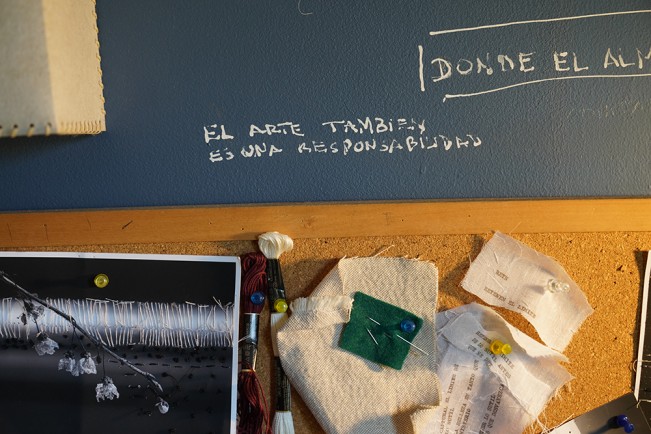
Written text on Aranoa’s studio. The text reads: “Art is also a responsibility.” © Photo by Vicente Isaías. Pilar, Argentina. March, 2024.
VI: I like that outlook on life, accepting and connecting with the universe, being open to receiving these signals.
PA: There must be thousands of signals that I miss.
VI: Like everyone.
PA: But look over there, (whispers) Do you see how that shines just a little, just a little, and it’s so subtle? (pause) I love it.
Posts on Lenscratch may not be reproduced without the permission of the Lenscratch staff and the photographer.
Recommended
-
Aaron Rothman: The SierraDecember 18th, 2025
-
Photographers on Photographers: Congyu Liu in Conversation with Vân-Nhi NguyễnDecember 8th, 2025
-
Linda Foard Roberts: LamentNovember 25th, 2025
-
Arnold Newman Prize: C. Rose Smith: Scenes of Self: Redressing PatriarchyNovember 24th, 2025
-
Spotlight on the Photographic Arts Council Los AngelesNovember 23rd, 2025


